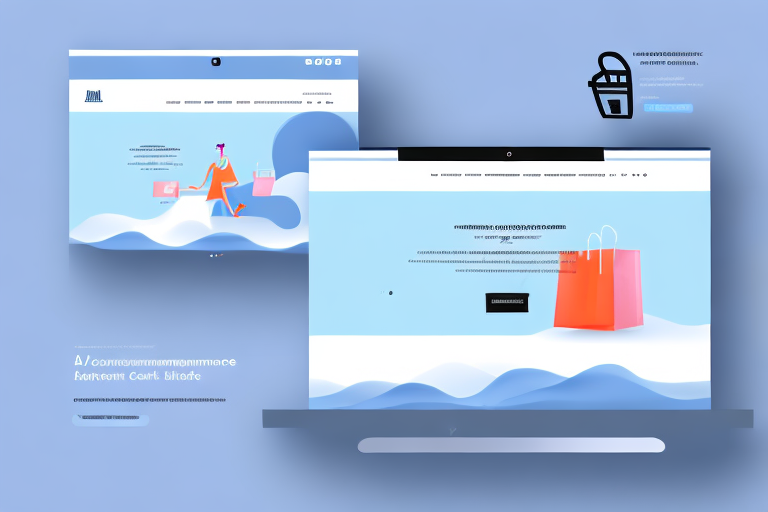The Importance of UX/UI Design in E-Commerce
Successful e-commerce platforms hinge on the quality of their User Experience (UX) and User Interface (UI) design. A well-crafted UX/UI not only facilitates seamless navigation but also fosters customer trust and loyalty. According to a Nielsen Norman Group study, a good user experience can increase conversion rates by up to 400%. Investing in robust UX/UI design ensures that your website is intuitive, aesthetically pleasing, and optimized for performance.
Understanding User Behavior and Personalization
Analyzing User Behavior
Understanding how users interact with your website is crucial for optimizing their experience. Utilizing tools like Google Analytics can provide insights into user behavior patterns, such as navigation paths, time spent on pages, and drop-off points. These insights enable businesses to identify pain points and areas for improvement.
Personalization Strategies
Personalization enhances the shopping experience by catering to individual preferences. By leveraging customer data, such as browsing history and past purchases, e-commerce sites can offer tailored recommendations and customized content. A report by Segment highlights that 44% of consumers are likely to become repeat customers after a personalized shopping experience.
Visual Design and Brand Identity
Impact of Visual Elements
The visual components of your website, including color schemes, typography, and imagery, play a pivotal role in shaping user perceptions. Consistent and high-quality visuals not only attract visitors but also convey professionalism and trustworthiness. According to Forbes, cohesive visual branding can increase brand recognition by up to 80%.
Maintaining Consistent Brand Identity
Ensuring consistency across all visual elements reinforces brand identity and aids in customer recall. Consistent use of logos, colors, and fonts across the website and marketing materials creates a unified brand image, which is essential for building trust and recognition among consumers.
Navigation and Usability Optimization
User-Friendly Navigation
Intuitive navigation is fundamental to a positive user experience. A clear and organized menu structure, combined with a robust search functionality, allows users to find products effortlessly. Incorporating filters and categories helps streamline the shopping process, reducing frustration and increasing the likelihood of conversions.
Responsive and Mobile-Friendly Design
With over 6.5 billion smartphone users worldwide, optimizing your website for mobile devices is imperative. Responsive design ensures that your site adapts seamlessly to various screen sizes, providing a consistent and user-friendly experience across all devices.
Checkout Process and Conversion Strategies
Streamlining the Checkout Experience
The checkout process is a critical touchpoint that can significantly influence conversion rates. Simplifying the checkout by minimizing required fields, offering guest checkout options, and providing multiple payment methods can reduce cart abandonment. A study by Baymard Institute reveals that a streamlined checkout can decrease abandonment rates by up to 35%.
Effective Call-To-Actions (CTAs)
Strategically placed and clearly defined CTAs guide users towards desired actions, such as adding items to the cart or completing a purchase. Utilizing contrasting colors, compelling text, and prominent placement enhances the visibility and effectiveness of CTAs, thereby boosting conversion rates.
Performance, Trust Signals, and Measuring Success
Optimizing Load Times
Website speed is a crucial factor in user satisfaction and SEO performance. Slow load times can lead to higher bounce rates and decreased sales. Implementing strategies like image compression, leveraging browser caching, and using Content Delivery Networks (CDNs) can significantly improve load times. Google recommends keeping load times under 3 seconds to maintain optimal user engagement.
Incorporating Social Proof and Trust Signals
Social proof elements such as customer reviews, testimonials, and trust badges enhance credibility and foster trust among potential buyers. Displaying verified reviews and showcasing security certifications can reassure customers about the reliability and safety of your e-commerce platform.
Measuring UX/UI Success
Assessing the effectiveness of your UX/UI design involves tracking key performance indicators (KPIs) like conversion rates, bounce rates, and average order value. Tools like Hotjar provide heatmaps and user session recordings, offering valuable insights into user interactions and areas for improvement.
Trends and Innovations in E-Commerce UX/UI Design
Embracing Emerging Technologies
Innovations such as Virtual Reality (VR) and Augmented Reality (AR) are transforming the e-commerce landscape by offering immersive shopping experiences. These technologies allow customers to visualize products in real-world settings, enhancing engagement and conversion rates.
Utilizing AI and Chatbots
Artificial Intelligence (AI) and chatbots are becoming integral in providing personalized customer support and recommendations. These tools can handle inquiries in real-time, offer product suggestions based on user behavior, and improve overall customer satisfaction.
Best Practices for Maintaining a Consistent Brand Identity
Unified Design Elements
Maintaining consistency in design elements such as color schemes, typography, and imagery across all pages ensures a cohesive brand identity. This uniformity aids in brand recognition and creates a professional appearance that resonates with customers.
Aligning Content with Brand Voice
Consistent use of language and tone throughout your website reinforces your brand’s personality and values. Whether it's formal, casual, or playful, aligning your content with your brand voice fosters a stronger connection with your audience.
In conclusion, optimizing UX/UI design is paramount for e-commerce success. By prioritizing user behavior analysis, visual design, navigation, and checkout optimization, businesses can enhance user satisfaction and drive conversions. Additionally, staying abreast of evolving trends and continuously measuring performance ensures sustained growth and a competitive edge in the dynamic e-commerce landscape.




















